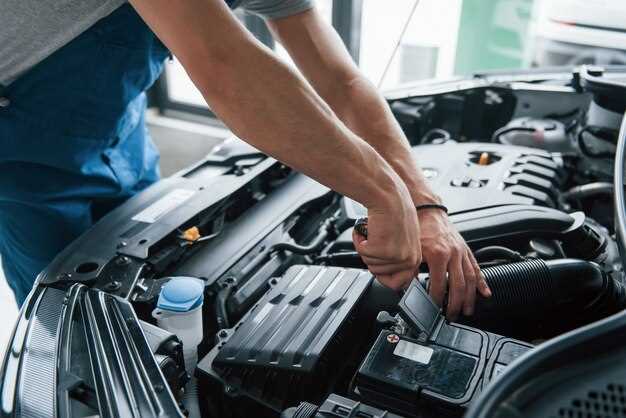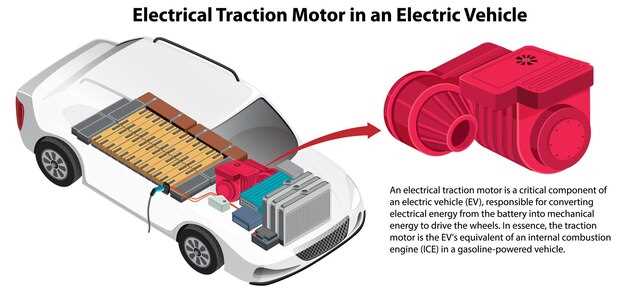
An alternator plays a crucial role in ensuring your vehicle’s electrical system functions properly. It is responsible for charging the battery and supplying power to various electrical components while the engine is running. When an alternator fails, it can lead to a host of problems, including a dead battery and electrical malfunctions. Understanding how to replace a faulty alternator can save you time and money, enabling you to handle this task efficiently.
In this guide, we will outline clear and concise steps to help you replace a faulty alternator in your vehicle. Whether you are a seasoned mechanic or a novice DIY enthusiast, our instructions will provide you with the necessary information to complete the replacement process with confidence. Proper tools and safety precautions are essential for a successful DIY project, so we’ll also cover the equipment you’ll need and the safety measures to follow throughout the repair.
By the end of this article, you will have a comprehensive understanding of the steps involved in alternator replacement, from diagnosing issues to successfully installing the new component. Let’s get started on restoring your vehicle’s performance and reliability!
Gather Necessary Tools and Materials for Alternator Replacement

Before beginning the process of replacing a faulty alternator, it is essential to gather all necessary tools and materials. Having everything on hand not only saves time but also ensures a smooth replacement procedure.
1. Basic Hand Tools: You will need a set of wrenches and sockets, specifically in metric or standard sizes, depending on your vehicle model. Common sizes are 10mm, 12mm, and 14mm. A ratchet and extension bars will also make accessing tight spaces easier.
2. Screwdrivers: A variety of screwdrivers, both Phillips and flathead, will be required. These tools will help you remove any covers or components obstructing access to the alternator.
3. Pliers: Needle-nose pliers can be useful for retrieving small clips and connectors while performing the replacement.
4. Serpentine Belt Tool: If your vehicle’s alternator is driven by a serpentine belt, a serpentine belt tool or a simple wrench will be necessary to release the tension off the belt, allowing for easier removal.
5. Replacement Alternator: Ensure you have the correct replacement alternator compatible with your vehicle’s make and model. It is advisable to verify part numbers or consult with a professional if unsure.
6. New Serpentine Belt (if needed): Inspect your serpentine belt for wear or damage. If it shows signs of wear, replace it alongside the alternator to avoid future issues.
7. Electrical Connecting Tools: Wire connectors and silicone grease may be advisable for ensuring reliable electrical connections when installing the new alternator.
8. Safety Equipment: Prepare personal protective equipment including safety goggles and gloves to protect yourself from dirt and debris during the process.
9. Vehicle Manual: Having the vehicle’s manual at hand can provide critical instructions specific to your model, including torque specifications and the location of various components.
Having these tools and materials prepared in advance will facilitate a more efficient and effective alternator replacement process, ensuring your vehicle is back on the road quickly and safely.
Follow a Step-by-Step Guide to Remove the Old Alternator
Removing a faulty alternator requires careful attention to detail and the right tools. Follow these steps to ensure a successful removal.
-
Gather Necessary Tools:
- Socket wrench set
- Screwdrivers (flathead and Phillips)
- Pliers
- Torque wrench
- Shop towel or rag
- Safety goggles and gloves
-
Disconnect the Battery:
- Open the vehicle’s hood.
- Locate the battery terminals.
- Using a socket wrench, disconnect the negative terminal first to prevent electrical shorts.
- Then, disconnect the positive terminal.
-
Locate the Alternator:
- Identify the alternator’s position in the engine bay, usually situated near the front of the engine.
- Take note of the wiring and the mounting brackets.
-
Remove the Serpentine Belt:
- Locate the belt tensioner and use a socket wrench to relieve tension.
- Carefully slide the serpentine belt off the alternator pulley.
- Release the tensioner back into position.
-
Disconnect Electrical Connections:
- Identify the electrical connectors attached to the alternator.
- Carefully disconnect any plug connectors by pulling them straight off.
- Remove the nut securing the battery cable to the alternator using a socket wrench.
-
Remove Alternator Mounting Bolts:
- Locate the main mounting bolts securing the alternator.
- Using a socket wrench, remove these bolts carefully.
- Support the alternator while removing the last bolt to prevent it from falling.
-
Take Out the Old Alternator:
- Once all bolts and electrical connections are removed, gently lift the alternator out of its mounting position.
- Be mindful of any surrounding components to avoid damage.
After thoroughly following these steps, the old alternator should be successfully removed from your vehicle. Ensure to keep all removed parts organized for easy installation of the new alternator.
Install the New Alternator and Ensure Proper Functionality

Begin by positioning the new alternator in the engine bay, aligning it with the mounting brackets. Secure it in place using the previously removed bolts. Tighten these bolts evenly to avoid stress on the alternator casing.
Next, reconnect the electrical connections to the alternator. This typically involves plugging in the wiring harness and securing the positive battery cable to the alternator output terminal. Make sure to tighten the nut on the terminal to ensure a solid connection.
Adjust the alternator belt tension. If your vehicle has an adjustable tensioner, locate it and tighten the belt until there is minimal play, approximately half an inch. If your vehicle uses a fixed bracket, ensure the belt is properly aligned on all pulleys before securing it.
Once everything is properly connected and secured, double-check all connections for tightness and ensure that the belt is aligned correctly. Start the vehicle and observe the dashboard for warning lights. A functioning alternator should prevent the battery light from illuminating.
To verify the alternator’s performance, use a multimeter to check the output voltage. With the engine running, the voltage should read between 13.5 to 14.5 volts. If the readings are outside this range, re-examine the connections and belt tension, or consider consulting a professional for further diagnosis.
Finally, turn off the engine and inspect for any signs of electrical issues or abnormal noises. Ensure everything is in order before closing the hood and taking your vehicle on the road.





